The Arab Uprisings
The Arab Uprisings
Catalysts, Dynamics, and Trajectories
Edited by Fahed Al-Sumait, Nele Lenze, and Michael C. Hudson
rowman & littlefield
Lanham Boulder New York London
Published by Rowman & Littlefield
A wholly owned subsidiary of The Rowman & Littlefield Publishing Group, Inc.
4501 Forbes Boulevard, Suite 200, Lanham, Maryland 20706
www.rowman.com
16 Carlisle Street, London W1D 3BT, United Kingdom
Copyright 2015 by Rowman & Littlefield
All rights reserved . No part of this book may be reproduced in any form or by any electronic or mechanical means, including information storage and retrieval systems, without written permission from the publisher, except by a reviewer who may quote passages in a review.
British Library Cataloguing in Publication Information Available
Library of Congress Cataloging-in-Publication Data
The Arab uprisings : catalysts, dynamics, and trajectories / edited by Fahed Al-Sumait, Nele Lenze, and Michael Hudson.
pages cm
Includes bibliographical references and index.
ISBN 978-1-4422-3900-5 (cloth : alk. paper) ISBN 978-1-4422-3901-2 (pbk. : alk. paper) ISBN 978-1-4422-3902-9 (electronic) 1. Arab Spring, 2010- 2. Protest movementsArab countries 3. DemocratizationArab countries. 4. Arab countriesPolitics and government21st century. I. Al-Sumait, Fahed Yahya, editor of compilation. II. Lenze, Nele, editor of compilation. III. Hudson, Michael.
JQ1850.A91A825 2014
909'.097492708312dc23
2014023933
 The paper used in this publication meets the minimum requirements of American National Standard for Information SciencesPermanence of Paper for Printed Library Materials, ANSI/NISO Z39.48-1992.
The paper used in this publication meets the minimum requirements of American National Standard for Information SciencesPermanence of Paper for Printed Library Materials, ANSI/NISO Z39.48-1992.
Printed in the United States of America
Foreword
The Long View of the Arab Uprisings
Rami G. Khouri
We are passing through perhaps the most significant moment in the modern history of the Middle East, one that will be analyzed here and in other books, and at other conferences like the one from which this volume hails, in a process that will go on for years to come. We can choose from many issues to use as a lens through which to analyze the changes taking place, both the current developments and the longer-term transformations across the region. We could look at power, actors, relationships among local and regional forces, or institutions. Perspectives of analysis could be socioeconomic, political, strategic, ideological, or religious. The options are endless, and the challenge for journalists, academics, and others is not to get caught up in the immediate media moment of election results, political party fragmentations, constitutional drafts, coups and counter-coups, or tribal clashes and thus judge the political situation prematurely.
Egypt has governed and managed its own complex societies for around 5,500 years, and its people are still doing so today. Recently, Egyptians and Tunisians have performed one of the most epic feats of human reaffirmation, dignity, empowerment, and rekindling of faith in the human spirit that we have seen in recent years. Egyptians and Tunisians have overthrown the military-based political system that they have lived under for the last sixty years. They have started the process of creating a new political systemunderway in such a short time, with new changes emerging almost every day. They offer those of us who live in the Middle East a spellbinding spectacle. These changes are continuously present and can be seen in events related to the presidential elections, the new constitutional committees, and parliamentary elections and new political parties. There have already been significant changes in sentiments and voting patterns by Egyptians during the past few years, as evidenced in the two presidential elections, the parliamentary elections, the short rule of the Islamists, and then the Tamarrud movement and army intervention that removed the Islamists, with apparent wide popular support. This volatility will continue. Our challenge is to step back and try to understand the political changes taking place in the broader context of recent history.
My suggestion is that we should see this as the single most important moment in the history of the modern Arab world, which begins with events decades before Mohamed Bouazizis self-immolation in December 2010. It began with the first recent wave of the Islamist movements in the 1970s, which coincided with the oil boom and the massive distortions of economic wealth and distribution. An additional influence was the cementing of the modern Arab security state, and the collapse of the Arab-Israeli conflict as a long-running military conflict among states at a regional level, after Egypt (and later Jordan) pulled out after they signed their peace treaties with Israel in 1978 and 1994, respectively. Hence, it was in the mid- to late 1970s that we find the early signs of the genesis of the Arab Uprisings that we see now. Scores of movements and formal organizations attempted to improve human rights and democracy conditions across the Arab world in the four decades before December 2010, but always to no availbecause the prevailing security-based political orders that were willing to beat down their own people and also controlled most national economic activity could not be budged by the limited activism that usually challenged these autocratic systems. Even mass uprisings, like the Kurdish and Shiite uprisings against the Baathist Iraqi government or the Muslim Brotherhoodled uprising against the Baathist Syrian government, were not able to remove or reform the security state systems. The December 2010 and January 2011 uprisings proved to be different, partly perhaps because they drew on the cumulative frustrations and humiliations that several hundred million Arab citizens had experienced in the preceding decades, and whose force was irresistible once it expressed itself in actions on the street. Another reason the Arab state orders did not give in to citizen protests (with the sole exception of the overthrow of Jaafar Numeiry in Sudan in the mid-1980s) was the significant support they received from the two superpowers during the Cold War years.
Historians will document this over time and give us a more accurate reading of this spirit of mass citizen revolt, of people in several countries rising up against their own autocratic systems, as happened first on December 17, 2010, in Sidi Bouzid in provincial Tunisia, when Mohamed Bouazizis self-immolation proved a triggering event to this process. It also could have been anything else that started the mass revolts, for this was one of those momentslike Steve Biko and Nelson Mandela in South Africa, like Lech Walesa in Poland, or Martin Luther King Jr. or Rosa Parks in the United States, or Aung San Suu Kyi in Burmawhen an individual undertakes an act, whether spontaneous or planned, of both defiance and self-affirmation, an act that simultaneously resonates with hundreds, or millions, of other people in their own country or in other countries. This is what we see happening right now across the Arab world. The movement to challenge and to change Arab authoritarian regimes is not new; the process has been going on for thirty or forty years, albeit unsuccessfully, because the powers that maintained these regimes were simply too strong to defy. As of 2014, our challenge is still to determine how we can most accurately analyze events as this process continues.
The Igniting Spark
We always have to go back to the beginning in these kinds of events and transformations to better understand what is happening, and in this case we can easily identify Tunisia and Egypt as the recent catalyststhe breakthroughs that finally toppled autocratic regimes when all other activism in previous decades could not achieve this. Mohamed Bouazizi serves as a good metaphor that captures what I believe is the critical driving force for these uprisings across the regionnot just uprisings in countries like Tunisia, Egypt, Libya, Syria, and Bahrain and Yemen, but also nonrevolutionary citizen demands and stirrings in other places like Jordan, Oman, Kuwait, and Morocco. There are signs all over the region that peopleeven if they are well-off and their basic material needs are methave other basic political needs that are not being met, especially intangibles denominated in the language of justice, respect, and dignity. That is the critical starting point for us to understand what happened when Mohamed Bouazizi, on that day of December 17, within a span of hours, had two degrading encounters with officials of his own governmentfirst, the policewoman who stopped him from selling fruits and vegetables, and therefore prevented his ability to meet his material needs; and second, when he went to the local governors office to protest his mistreatment. There, he was sent away, so his inability to work and satisfy his familys material needs was compounded by the message from the local provincial governor that he also did not have any political rights. He discovered, in fact, that he did not really exist, he did not have a voice, he did not matter, and he did not count. He was an invisible person, with no rights or recourse. That combination of crucial dimensions of life help explain the uprisings to me, because they define what most Arab citizens lack: secure material needs and the intangible needs of status as a citizensuch as voice, legitimacy, participation, accountability, dignity, trust, and respect. These many words all mean essentially the same thingthat people need to feel that they are treated fairly and decently by their own power structure. This is not about invading American or British armies; we are not talking about Israeli colonization and annexation, Iranian involvement in Arab states, or other foreign interventions. Citizens are being mistreated by their own Arab countries and governments, for these uprisings are the work of disgruntled citizens who are demanding from their own societies a combination of their material rights and their intangible political rights to be given to them, at a minimum level, so that they feel that they actually do exist, that they do have rights, that they can expect their children will have reasonable opportunities to enjoy a normal, decent, and full life. Hence, going back to Mohamed Bouazizi is a useful exercise because he is a dramatic and accurate symbol of the material and the intangible political rights that Arab citizens feel they have long been denied.
Next page
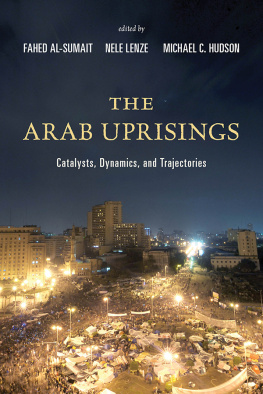

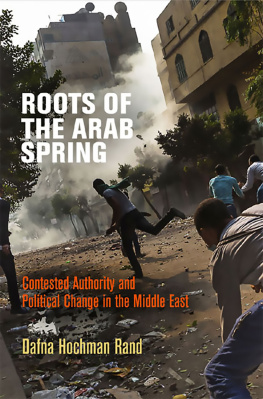
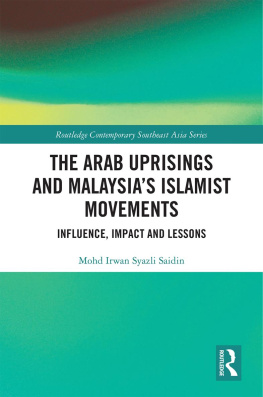
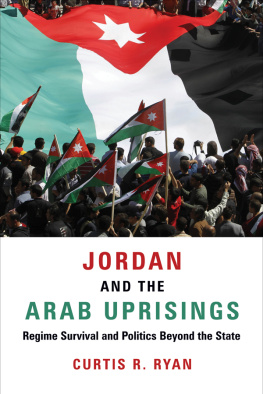
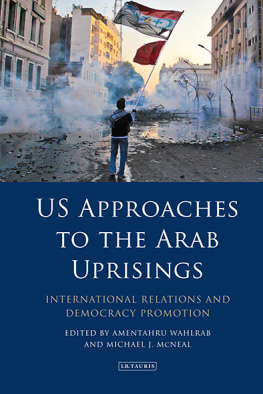
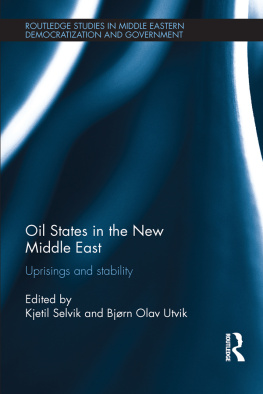
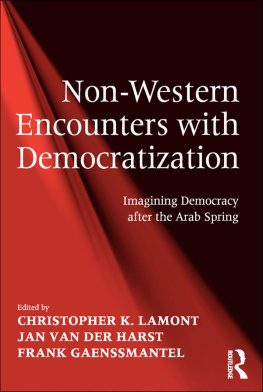
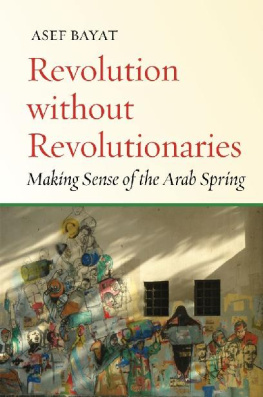
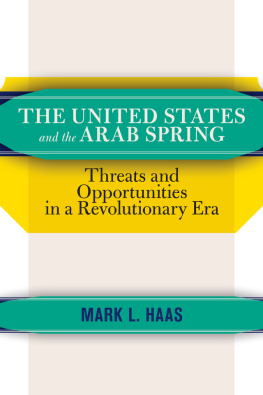
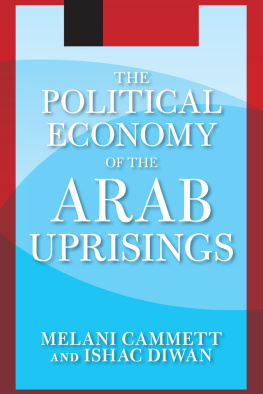
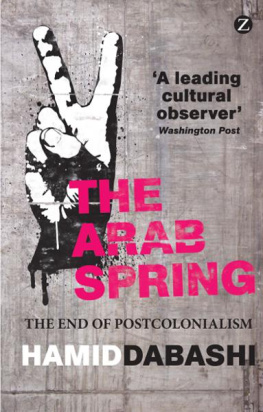
 The paper used in this publication meets the minimum requirements of American National Standard for Information SciencesPermanence of Paper for Printed Library Materials, ANSI/NISO Z39.48-1992.
The paper used in this publication meets the minimum requirements of American National Standard for Information SciencesPermanence of Paper for Printed Library Materials, ANSI/NISO Z39.48-1992.